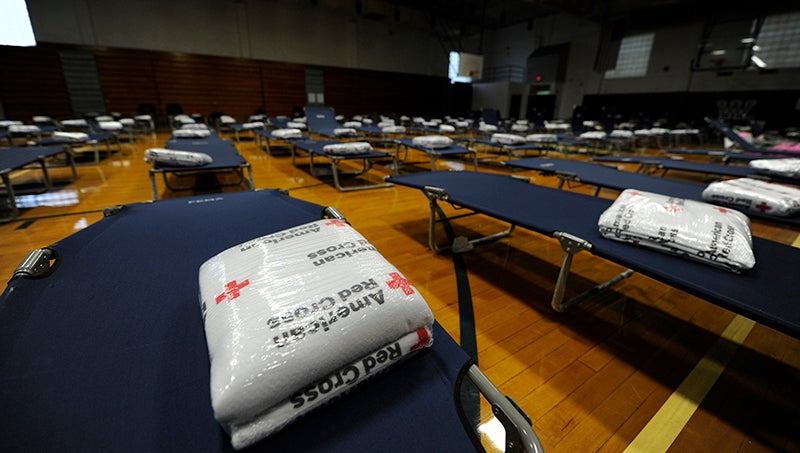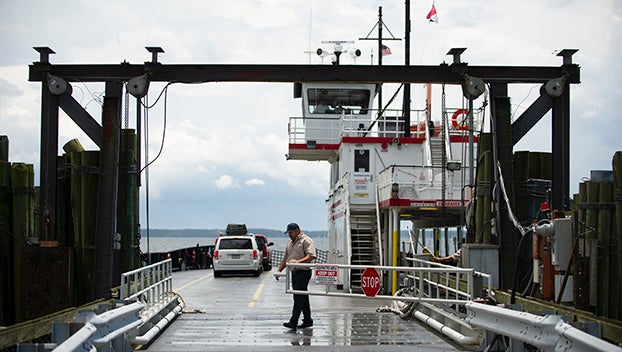Shelters a ‘last resort’ in COVID era
Published 12:12 am Saturday, August 1, 2020

- COVID CHALLENGES: With Hurricane Isaias on the horizon, Beaufort County Emergency Services is preparing for sheltering hurricane evacuees, a concept that is very different in the midst of a global pandemic and requirements for social distancing. (Ashley Vansant/Daily News)
|
Getting your Trinity Audio player ready...
|
Early on Sept. 14, 2018, 430 people were camped out in the Washington High School gym, seeking shelter from Hurricane Florence. That night, the number swelled to 790, and a second shelter was opened at P.S. Jones Middle School, as flooding from Florence forced people to evacuate, or be rescued, from their homes.
Just short of two years later, eastern North Carolina is eyeing Hurricane Isaias, the first storm of the season that potentially could have local impact. But sheltering in 2020 looks a lot different than 2018.
“COVID — amongst many of the landscapes it has changed — the sheltering aspect is one it has changed dramatically,” said Chris Newkirk, deputy director of Beaufort County Emergency Services.
The newest challenge of COVID-19 is providing shelter to those at risk during a storm, while keeping evacuees safe from potential exposure to the virus. While emergency services has pushed the public to prepare and be able to self-sustain during and after a storm, in previous years, residents of properties at risk for flooding were encouraged to take advantage of the county-provided shelter if necessary.
This year, the message has changed. The shelter will still be opened, if needed, but the way it operates will be vastly different.
“We’ve been fortunate in the past that we’ve had very good amenities in our shelters, and those who needed it could go to those shelters in comfort and community. But during COVID, that’s not going to be the option,” Newkirk said.
The difference will start at the door. What was a quick sign-in, with only name and address required, will now include temperature taking and medical screening of those seeking shelter. Previously, cots have been lined up in close rows on the gym floor; now the American Red Cross, North Carolina Department of Health and Human Services and the Centers for Disease Control and Prevention have all issued guidelines for shelter operations, which include social distancing in the shelter environment.
Without cots, each shelter inhabitant needs 60 square feet per person to ensure social distancing; with cots, that number jumps up to 110 square feet per person. While those agencies recommend the “no cot” policy — as cots are considered a surface that can be contaminated — the local shelter will continue to provide cots. What that means, however, is that Washington High School’s 500-person capacity of the past has now been whittled down to a maximum of 178 people, and that is including expansion to several classrooms outside of the gym.
“People have traditionally relied on our shelters, but we really need to change that this year. If people can find places to stay with family or friends, that would be the first choice,” Newkirk said.
The changes will be noticeable. Every shelter-seeker will be required to wear a facemask at all times and to stay within the exact 110-square-foot area taped off around each cot. Meals will no longer be provided cafeteria-style, instead they will be delivered from the cafeteria, evacuees will eat in their designated areas and plates will be picked up afterward.
“It really all comes down to social distancing and the safety measures you have to have in place to accommodate that many people,” Newkirk said. “You get 100 people in a room together, they’re going to talk, and they’re going to socialize, but in a COVID environment, that’s not going to be allowed. It’s not going to be a commingled, community environment.”
In addition to increased cleaning of light switches, doorknobs and bathrooms, those operating the shelter will be determining, on arrival, who is healthy and who is at high risk for COVID and separating them accordingly. If anyone is exhibiting COVID symptoms, they will not be turned away, but they will be isolated, Newkirk said.
“If someone is sick, we’ll isolate them in a sick room. We’re going to avoid, at all costs, putting that person who is coughing, sneezing, has a fever, in the healthy side,” he said.
What has not changed is if the shelter reaches 75% capacity, the back-up shelter at P.S. Jones will be opened to accommodate the overflow. That was the case during Florence, but prior to that hurricane, the shelter numbers historically were much lower. Another concern might drive numbers up again, this time with out-of-county residents: other counties are not as well-equipped to harbor evacuees, especially with the new requirements.
“We’re not at the point of ‘prove your residence’ (in the county), but we know, just by tracking occupants in the past, we do have people coming from other counties. And for counties north and northeast of us, that already had limited shelters, this is crippling,” Newkirk said.
Beaufort County Emergency Services will make an announcement Saturday evening regarding shelter openings, if Hurricane Isaias tracks through eastern North Carolina. Until then, residents at storm-risk are encouraged to call on family or friends to line up shelter, if needed.
“We want to emphasize that you really need to make your plans and not rely on shelters,” Newkirk said. “A shelter, particularly in this COVID environment, should be a last resort.”
For more information about Hurricane Isaias, visit nhc.noaa.gov, co.beaufort.nc.us/departments/public-safety/emergency-services/emergency-management or follow Beaufort County Emergency Services on Facebook.
To view a list of recommended items to bring to the shelter with you, see the online version of this article at www.thewashingtondailynews.com.





